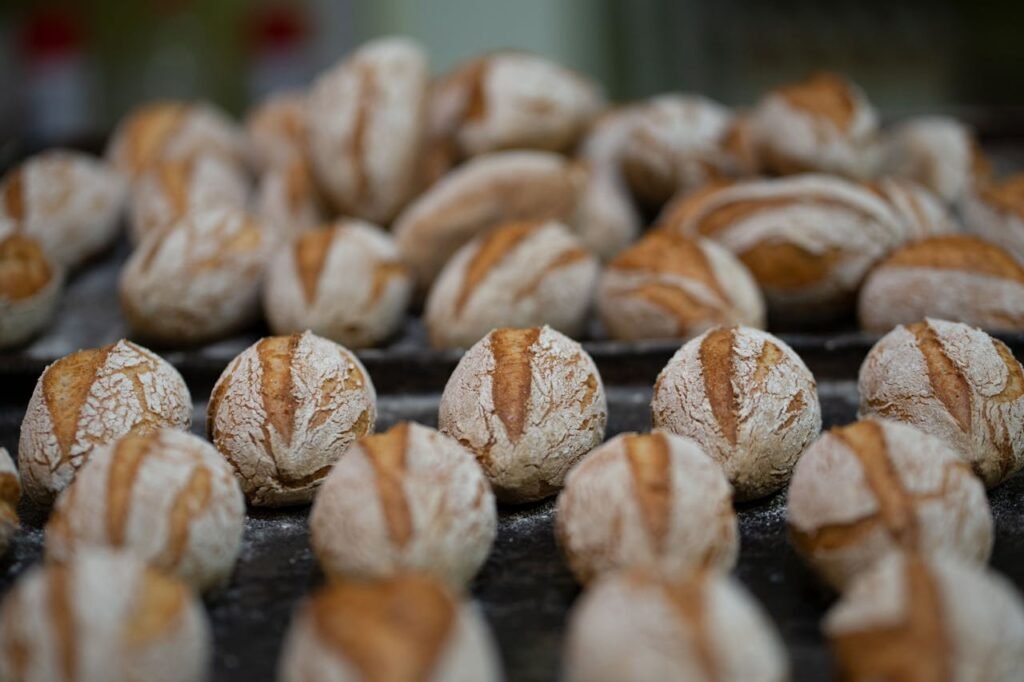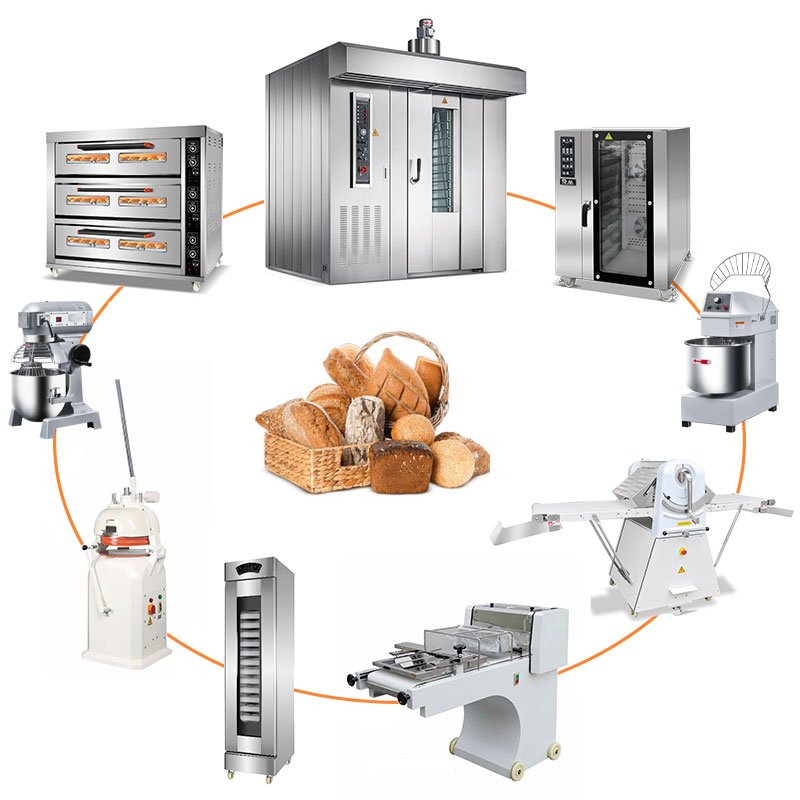In commercial bakeries, home kitchens, and food production facilities, dough preparation is a foundational step that directly impacts the texture, flavor, and quality of final products like bread, pastries, and pizza. Two common pieces of equipment used for this task—dough mixers and dough kneaders—are often confused, but they serve distinct purposes, operate on different principles, and cater to varying needs. Understanding their differences is critical for choosing the right tool, optimizing workflow, and achieving consistent results. Below is a detailed breakdown of their key distinctions across six core dimensions.
1. Core Function: Versatility vs. Specialization
The most fundamental difference lies in their primary purpose:
- Dough Mixers: Designed as versatile workhorses, their core function is to combine ingredients uniformly rather than focusing exclusively on kneading. They excel at mixing wet and dry components (e.g., flour, water, yeast, sugar) into a smooth, homogeneous dough base. Beyond dough, many models can handle non-dough tasks like whipping cream, beating egg whites, mixing cake batters, or even grinding small quantities of nuts—thanks to interchangeable attachments (whisks, paddles, etc.). For example, a stand mixer in a home kitchen might mix cookie dough one day and whip meringue the next.
- Dough Kneaders: Built for specialized kneading, their sole focus is to develop gluten structure in dough—a critical step for chewy, elastic products like artisanal bread or bagels. Unlike mixers, they do not prioritize versatility; their design (e.g., spiral hooks, rotating bowls) is engineered specifically to apply the sustained, gentle pressure needed to stretch gluten strands without overheating the dough. A commercial spiral kneader, for instance, will only be used to knead bread dough, not mix pastries or whip toppings.
2. Working Mechanism: Agitation vs. Kneading Action
- Dough Mixers: Operate through agitation. Most use a stationary bowl with a rotating attachment (e.g., a dough hook, paddle, or whisk) that moves in a circular or planetary motion. This motion stirs ingredients together, creating a cohesive dough, but it does not apply the same level of targeted pressure as a kneader. For example, a planetary mixer’s dough hook spins while the bowl remains fixed, mixing dough by folding and stirring rather than pressing.
- Dough Kneaders: Use a mechanical kneading action that mimics hand-kneading but with greater consistency and efficiency. Two common designs dominate:
- 1).Spiral Kneaders: Feature a large, spiral-shaped hook that rotates inside a slow-turning bowl. The spiral hook presses, stretches, and folds the dough against the bowl’s inner wall—exactly how a baker would knead by hand, but with uniform pressure.
- 2).Horizontal Kneaders: Have a horizontal trough and two rotating arms (or “kneading blades”) that push the dough back and forth, compressing it to develop gluten. This design is ideal for large batches (e.g., in commercial bakeries) as it minimizes dough oxidation and heat buildup.
3. Dough Handling: Batch Size and Dough Type
The amount and type of dough each device can process differ significantly:
- Dough Mixers: Are best for small to medium batches (typically 1–10 kg of dough in home or small commercial models). They struggle with very dense or high-hydration doughs (e.g., sourdough with 80%+ hydration) because their agitation-based motion can lead to uneven kneading or dough sticking to the attachment. They are well-suited for lighter doughs like pastry dough, pizza dough (thin-crust), or sweet bread doughs (e.g., cinnamon rolls) that require less gluten development.
- Dough Kneaders: Excel at large batches (10–100 kg or more in commercial units) and dense/high-hydration doughs. The spiral or horizontal design applies enough pressure to handle heavy bread doughs (e.g., rye bread, whole-wheat bread) and high-hydration sourdoughs without straining the motor. For example, a bakery producing 50 loaves of sourdough daily would rely on a spiral kneader to process 20 kg of dough at once, ensuring each batch has consistent gluten development.
4. Gluten Development: Speed vs. Precision
Gluten—the protein network that gives bread its structure—is a key factor in dough quality, and the two devices affect it differently:
- Dough Mixers: Develop gluten faster but less precisely. Their high-speed agitation can quickly form gluten, but it may also create uneven gluten distribution or generate excess heat (from friction), which can damage yeast activity. For example, over-mixing with a stand mixer can lead to “tough” pastry dough or bread with a dense crumb, as the gluten becomes overdeveloped.
- Dough Kneaders: Develop gluten slowly but uniformly. Their gentle, pressure-based motion stretches gluten strands gradually, allowing for optimal development without overheating. This precision is critical for artisanal breads, where a well-structured gluten network ensures a light, airy crumb and a crispy crust. A spiral kneader, for instance, will knead a batch of bread dough for 8–12 minutes (vs. 4–6 minutes in a mixer) to build gluten without compromising quality.
5. Energy Efficiency and Cost
Practical considerations like energy use and price also distinguish the two:
- Dough Mixers: Are generally more energy-efficient for small tasks and more affordable. Home stand mixers cost 100–500, while small commercial models range from 1,000–5,000. Their smaller motors (0.5–2 HP for home use) consume less electricity, making them ideal for occasional or low-volume use.
- Dough Kneaders: Require more energy (due to larger motors, 2–10 HP or higher) and are significantly more expensive. Commercial spiral kneaders start at 5,000andcanexceed50,000 for industrial models. However, their efficiency with large batches offsets the cost for high-volume operations—they reduce labor time and minimize dough waste, making them a cost-effective investment for bakeries.
6. Ideal Use Cases
To summarize, the choice between a dough mixer and a kneader depends on your needs:
- Choose a Dough Mixer if:
- You work with small batches (home baking, small cafes).
- You need versatility (mixing dough, batters, creams, etc.).
- You primarily make light doughs (pastries, thin-crust pizza, sweet breads).
- Choose a Dough Kneader if:
- You process large batches (commercial bakeries, food manufacturers).
- You specialize in dense or high-hydration doughs (sourdough, whole-wheat bread).
- You prioritize consistent gluten development and high-quality bread texture.
Conclusion
While dough mixers and dough kneaders both play roles in dough preparation, they are not interchangeable. A dough mixer is a flexible tool for everyday mixing tasks, while a dough kneader is a specialized machine for perfecting gluten-rich doughs at scale. By understanding their differences in function, mechanism, and use cases, bakers—whether home enthusiasts or commercial operators—can select the equipment that best aligns with their goals, ensuring delicious, consistent results every time.


